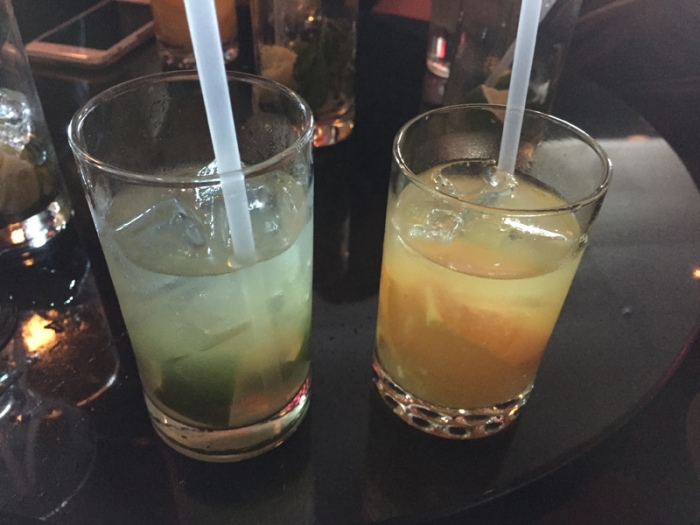Before coming into this vacation, my stress level from work was pretty high. I knew in advance that this trip was going to be relaxing and it would not be filled with a lot of events. That said, I did not create an itinerary for the “at sea” days on the ship.
It was already after 12:00 p.m. and we watched our families battle it out with the trivia contest. Both of them tied for first with 24 correct out of 25. After the time-breaker, one of our groups emerged as a tie with another team and were awarded medals.
I then decided upon an activity that was more of my liking: Motijo and Caipirinha tasting at the Cadillac Lounge. In addition to a mojito tasting, this seminar would also feature detailed instructions on how you can prepare various types of mojitos.
 Our speaker was definitely very passionate about the mojito. He had extensive knowledge on its origin and acknowledged that people in many countries had created local versions of the popular drink.
Our speaker was definitely very passionate about the mojito. He had extensive knowledge on its origin and acknowledged that people in many countries had created local versions of the popular drink.
Until then, I was not aware that the drink was originally named “El Draque” and it was made from a crude form or rum (aka fire water), sugar (from sugar cane), lime and mint. This drink was created to act as a remedy for scurvy and diarrhea.

The basic mojito is made from rum, lime, mint, sugar and club soda. Depending on the type of rum you use, there are many variations of this drink. Bacardi has a full line up of fruit-infused rums such as: pineapple, mango and raspberry.
English-speaking countries such as Jamaica, Barbados and Trinidad produce darker rum, usually based on molasses. Spanish-speaking countries such as Dominican Republic and Venezuela generally produce lighter and smoother rums.
Our presenter said that it is very important to slap the mint before dropping it into a highball glass with rum. This releases extra flavor from the mint leaves. Instant of pumping the muddler up and down, he strongly recommended doing a single press and twist on the mint leaves. Pumping the muddler up and down will break up the mint leaves and they will end up traveling up through your straw.
Instead of sugar, he used simple syrup. He then added club soda and topped it off with some sliced limes.

Additional variations include the “dirty mojito” or one made with dark rum, a spiced mojito or one with a spiced rum such as Captain Morgan. He even added that the mint julep qualifies because it includes lime, mint leaves and sugar. The Kentucky bourbon replaces the rum.

He introduced us to a Brazilian drink, the Caipirinha. This is made with Cachaça, sugar and lime. A dark red drink poured into a martini glass proved to be a raspberry mojito made rum, Chambord, sweet and sour and strained raspberry purée. Because it does not contain club soda, some bartenders call this a raspberry martini.
Once we felt comfortable making mojitos, he told us to begin experimenting with other fruits. Before you muddle the mint leaves, you can add fruit like mangos, pineapples or watermelon and muddle them with the mint leaves. This allows you to add your favorite fruits and experiment to see what happens.
This seminar ended up to only cost $20. This was quite a bargain considering the amount of mojitos that were enjoyed.